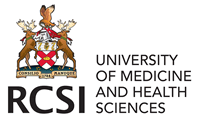Dr M Morgan, Prof L Young
Applications accepted all year round
About the Project
Radiographic mammary microcalcifications constitute one of the most important diagnostic markers of both benign and malignant lesions of the breast. Up to 50% of all nonpalpable breast cancers are detected solely through microcalcifications presenting during a
mammogram scan and up to 93% of cases of ductal carcinoma in situ (DCIS) present with microcalcifications. During the past decade, cases of subclinical cancer, that is, breast cancers detected by mammography, have accounted for a progressively increasing percentage of breast cancers.
Although the diagnostic value of these microcalcifications in breast cancer is well established, their genesis is not clear. In particular, the question as to whether they are a sign of degeneration or of an active cell process remains a matter of debate. It is generally accepted that the presence of oxalate-type microcalcification [CaC2CO4- 2H2O, Type I] appears to be a reliable criterion in favour of the benign nature of the lesion or, at most, of a lobular carcinoma in situ, whereas calcium hydroxyapatite (HA) [Ca10(PO4)6(OH2), Type II] is generally associated with malignant breast tumours.
With the exception of our recent publications, there have been no other reported investigations of the mechanism of calcium deposition or, the potential of differing mammary cell types to generate specific calcium mineral species.
No study to date has examined the proinflammatory potential of the deposited hydroxyapatite found associated with breast cancer. Furthermore, the potential for mineralisation and the microenvironment regulating it representing a significant feature of selected tumours has not even been considered. This project will test the hypothesis that (i). Mammary cells can generate specific mineral deposits which reflect their molecular subtype and/or state of differentiation; and (ii). mineralisation induced local inflammation may promote an inflammatory niche which contributes to tumour progression.
This PhD project will help elucidate the relationship between microcalcifications and the mammary tumour microenvironment, establishing the role for mineralization-associated proinflammatory molecules in influencing macrophage function and polarization. The project will further clarify the biological consequence of mineralization-induced epithelial to mesenchymal transition in promoting tumourigenesis through active tissue remodelling. This study will help resolve the unexplained prognostic association of these calcifications with benign and malignant disease of the breast and help to understand the full complexities of one of the most significant markers of pre-invasive breast cancer.

 Continue with Facebook
Continue with Facebook

